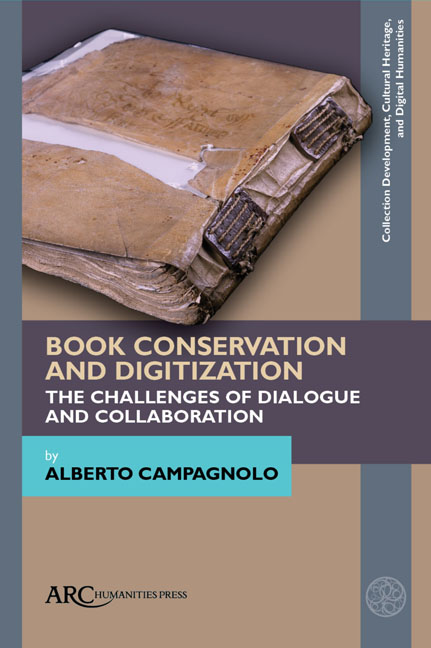Chapter 7 - Caring for the Object during Digitization of Written Heritage: The Strategy of the Herzog August Library Wolfenbüttel
Published online by Cambridge University Press: 20 November 2020
Summary
IN ADDITION TO their contents, the value of manuscripts and printed books lies in the tradition of writing, decorating, or illustrating and is also reflected in the unity of an object, its physical form and features, its material, structure, and binding, to name just a few. Hence the preservation of a broad spectrum of historical evidence claims high priority. This applies in particular to digitization projects, which are intended to play an important preservation role in protecting fragile or valuable originals from handling when digital surrogates are used to present their content.
Lessons from the Past: New Specifications
At the Herzog August Library Wolfenbüttel (HAB) the long-time use of a wide range of reformatting methods for the historic holdings has caused typical damage with fatal “side effects” ever since the era of analogue photography. As a consequence of forcing books open, for example, their sewing threads tore, bands broke, or covering materials burst at the joints. Detached boards or even bookblocks completely split at the spines were also unfortunately not rare.
This created the paradoxical situation that a measure of preservation— such as the creation of surrogates to protect the originals— partly proved to be destructive. Many years have passed since then. This experience and the analysis of the ensuing damage led to the formulation of a decisive specification:
Manuscripts and early printed books require that the reformatting technique should be adapted to the individual demands of the object, and not vice versa.
Further steps inevitably had to follow: on the one hand, the HAB encouraged the urgently needed development of state-of-the art imaging tools and, on the other, it began to integrate an upstream assessment process on the physical condition of books and the impact on their being handled during the conversion process.
Against this background, the Wolfenbüttel Library has already withdrawn from the imaging techniques common in times of analogue reproduction, where without exception books would be opened to 180 degrees and fixed in this position with the aid of a glass plate.2 While opening a book to 180 degrees, the laminar pressure against the glass plate is applied not only to the two pages to be captured and the media used on the pages of manuscript or print, but to the entire book and its mechanics.
- Type
- Chapter
- Information
- Book Conservation and DigitizationThe Challenges of Dialogue and Collaboration, pp. 127 - 144Publisher: Amsterdam University PressPrint publication year: 2020



